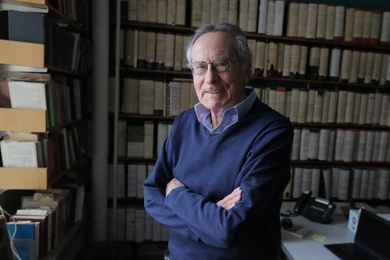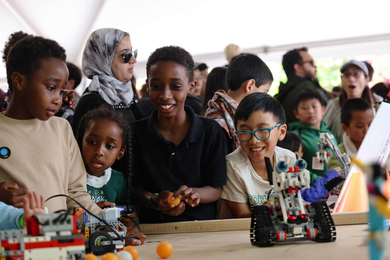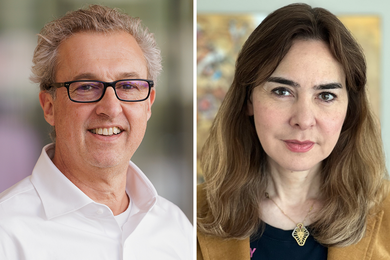Many MIT students, like their beaver mascot, are well-known for engineering skills, industrious habits, and for creating some amazing things late into the night. So, an ambitious project to build a 1:1 scale replica of MIT in Minecraft may come as no surprise. “As MIT students normally are nocturnal people anyway, there’s no doubt that we would apply our normal schoolwork habits to a light-hearted project like this,” says Shayna Ahteck, a first-year student involved with building and community outreach for the initiative.
With the Covid-19 pandemic scattering students around the globe, Minecraft — a sandbox style game akin to digital Lego — has served as a creative and cathartic outlet for some students while they are physically away from campus, while also providing the entire community with some sense of stability. “Getting back to the basic structure of what campus looks like, while not a replacement for the feeling that I got from people and everything, it reminds me of all the times that we had, as well as processing some of my own grief from leaving campus,” says Ahteck.
The initial idea to recreate MIT’s campus in Minecraft surfaced in the Busy Beavers Discord server, a chat platform that has connected nearly 1,000 students and other displaced members of the MIT community. Jeffery Yu, a sophomore in Course 18, originally hosted the project on his personal computer. “We told people they could build whatever their heart desired, and it’s been really interesting to see how many MIT interests have come together,” Yu says.
As more students joined the project, it had to be migrated to a server. The game is now hosted and supported by the Student Information Processing Board (SIPB), a volunteer computing group that has worked to improve MIT’s computing environment since 1969.
Alexander Patton, a senior in mechanical engineering who laid the groundwork in the Minecraft server, has been pleasantly surprised by everyone’s creative collaboration. “I've really been blown away by the attention to detail that people put into all the buildings and projects,” he said. “When we started this, I kind of expected, like, okay, there's so many buildings, we probably will just build the outsides so it kind of looks like MIT, but people really have been trying to build the whole interiors. It really just shows to me how much these spaces meant to them and how MIT is basically like a second home.”
The Minecraft platform launched in 2009 and was acquired by Microsoft in 2014. Today, 112 million players are active each month, and it is now considered the best-selling video game in history. The platform is so flexible that courses on paleontology, chemistry, and computer coding have been launched through an educational version.
The project truly is a community-wide project, including admitted members of the Class of 2024. With long stretches of social distancing on the horizon, Minecraft is serving as a channel for human interaction for many during a time of uncertainty. “To be able to see everyone from all these different walks of MIT when you otherwise wouldn’t have is cool because otherwise it would a little while longer until we randomly happen across these people and have interesting conversations about the things they enjoy,” says William Moses '18, a PhD student in electrical engineering and computer science and chair of SIPB.











